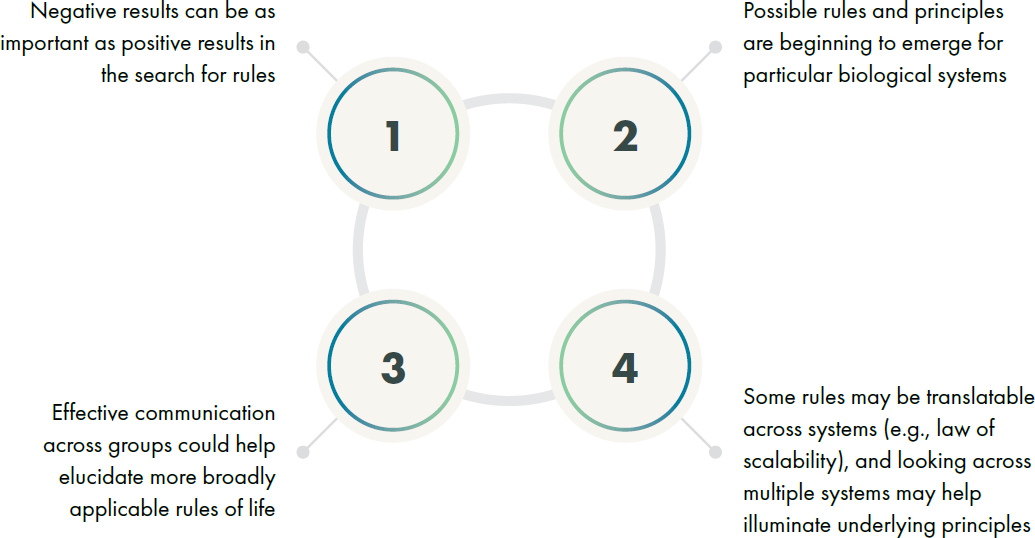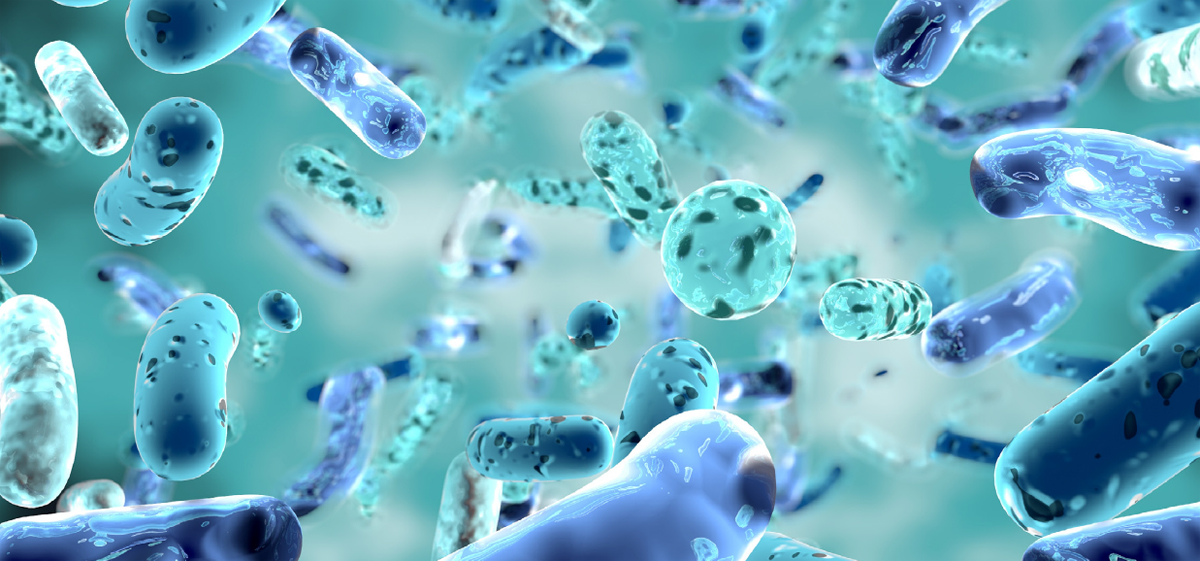Understanding the Rules of Life Program: Scientific Advancements and Future Opportunities (2023)
Chapter: Emerging Themes in Identifying Rules of Life
Emerging Themes in Identifying Rules of Life
The National Academies’ workshop series provided an opportunity for researchers involved in URoL projects to look back at their research and determine if progress had been made toward the goal. Experiences and statements were highlighted by several participants across the workshop series (see figure below). Several URoL researchers had identified possible rules of life that make biology work in their systems. Some researchers had identified rules that may be translatable across systems. Many participants said that the absence of results (or negative results) can be as informative as the presence of results (positive results). Several participants noted that regular, facilitator-led communications could help researchers identify rules of life.
KEY THEMES EMERGING FROM URoL ACTIVITIES


Emerging Themes in Epigenetics
How can behaviors and environment change the way that your genes work? Epigenetic changes do not alter DNA sequences, but they can create changes in how genes are expressed and how traits come about. For example, research on bees shows that the trait of shivering to keep warm is expressed only in the bee colonies that live in colder environments.
The purpose of the URoL: Epigenetics program is to enable innovative research and promote multidisciplinary education and workforce training in the broad area of epigenetics, with a focus on understanding the relationship between epigenetic mechanisms associated with environmental change, organismal phenotype, and resultant robustness and adaptability of organisms and populations.
Certain themes recurred throughout the workshops (see themes below). Participants considered how these themes played out in their respective systems and how they might reflect more generalizable rules. A common theme considered by the researchers was whether epigenetic changes that resulted from stress, whether in the form of DNA methylation, RNA methylation, or 3D changes in chromatin architecture, were adaptive or maladaptive. In every system discussed, stress is likely a key cue for epigenetic adaptation, and in at least four of these—plant, coral, human, and bee—DNA methylation may be a key epigenetic element driving it.
KEY THEMES FROM EPIGENETICS PROJECTS


Emerging Themes in the Microbiome
Nearly all living systems, from coral reefs to the human body, live with and most often benefit from their microbiomes, which is comprised of bacteria, viruses, fungi, and other microbes. Understanding the rules of life without examining the role of the microbiome is impossible given the intimate relationships between microbial communities and the organisms with which they exist.
Defining a microbiome as “a collection of different microbes in a specific habitat [that] may include non-host associated microbiomes and host-associated microbiomes,” NSF published two calls for URoL: Microbiome proposals in 2019 and 2020. NSF called for research that generates and tests hypotheses about the causal relationships within the microbiome and among the microbiome, host, and environment, focusing on understanding interactions and mechanisms that govern the structure of microbiomes. A third program, URoL: Emergent Networks, is a cross-directorate program of NSF that includes some microbiome research.
Certain themes that recurred more than once (see themes below) included rethinking the role of co-phylogeny (that is, a long-term process of co-evolution) in establishing the relationship between a host and its microbial symbionts, looking at the predictive potential of how a host’s disease phenotype is related to its microbiome and metabolites, and studying how the diversity of microbiomes makes organisms more resilient. Participants considered how these themes might reflect an avenue for pursuing more generalizable rules.
KEY THEMES FROM MICROBIOME AND MICROBIAL PROJECTS


Emerging Themes in Synthetic Cells
Learning about natural systems is not the only way to learn about and harness the knowledge of rules of life. Synthetic biology (now referred to as engineering biology) depends on understanding an array of metabolic and cellular processes that determine how a cell is created, what materials it can produce, and what functions it can conduct. Participants discussed their progress toward identifying biological rules that underlay the processes they were attempting to alter.
The purpose of the URoL: Synthetic Cells program is to stimulate innovative and transformative research proposals that leverage developments in biophysics, chemistry, computer science, geosciences, materials science, soft condensed matter, and biology with engineering and social sciences to make substantial progress toward producing a synthetic cell.
Full proposals included multidisciplinary teams with at least one bioethics researcher, an educational plan to train the students and technicians involved in the project, and generalized instruction in synthetic cell technology and applications for graduate and undergraduate students and for the lay public.
Certain themes recurred more than once (see themes below). For example, researchers found that the ratio of membrane channels may be more important in propagating spikes than the absolute number of channels, and that large-scale mechanical behaviors may be of greater importance, especially for free-living cells. Participants considered how these themes might reflect an avenue for pursuing more generalizable rules.
KEY THEMES FROM SYNTHETIC CELLS PROJECTS










